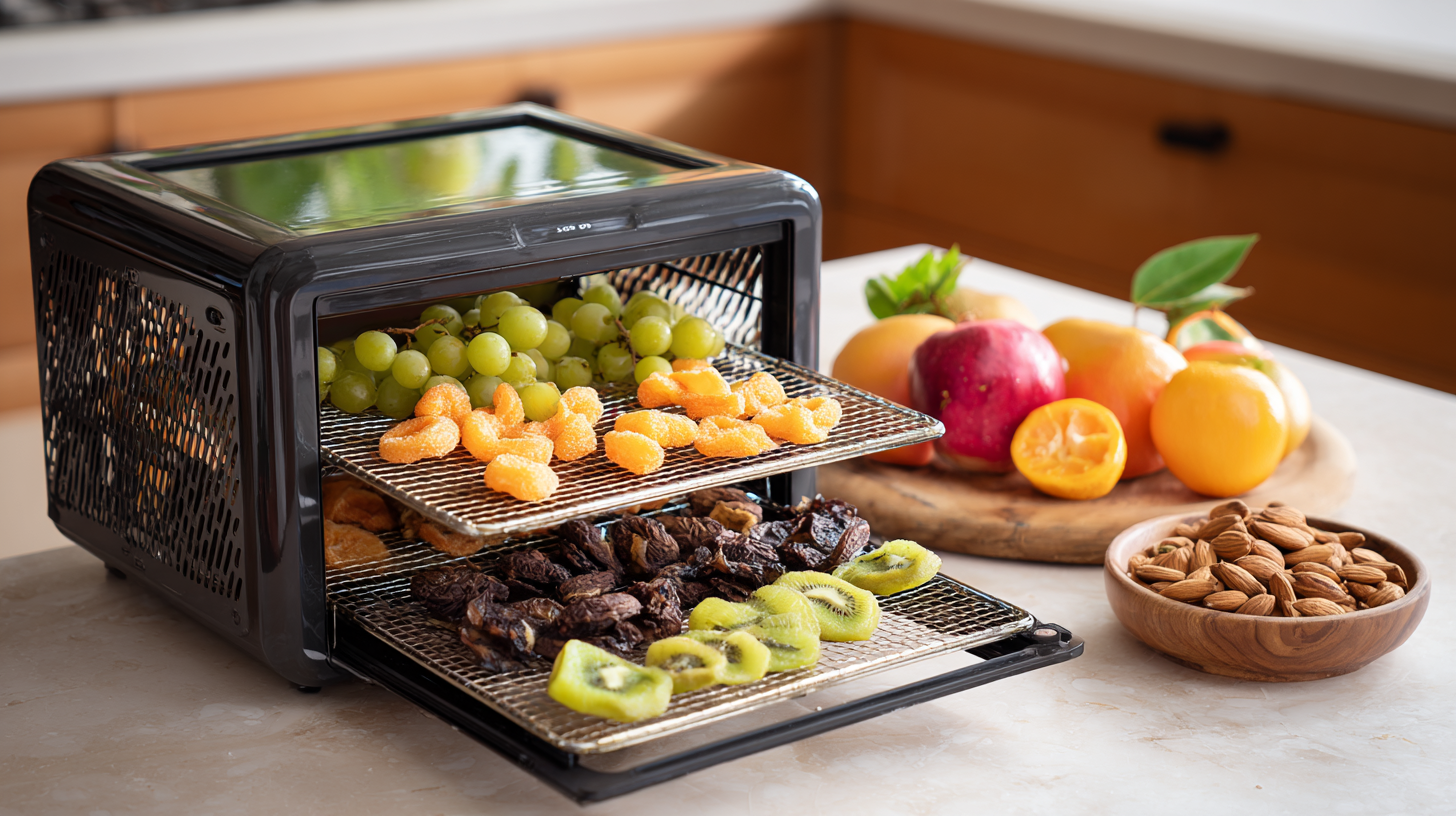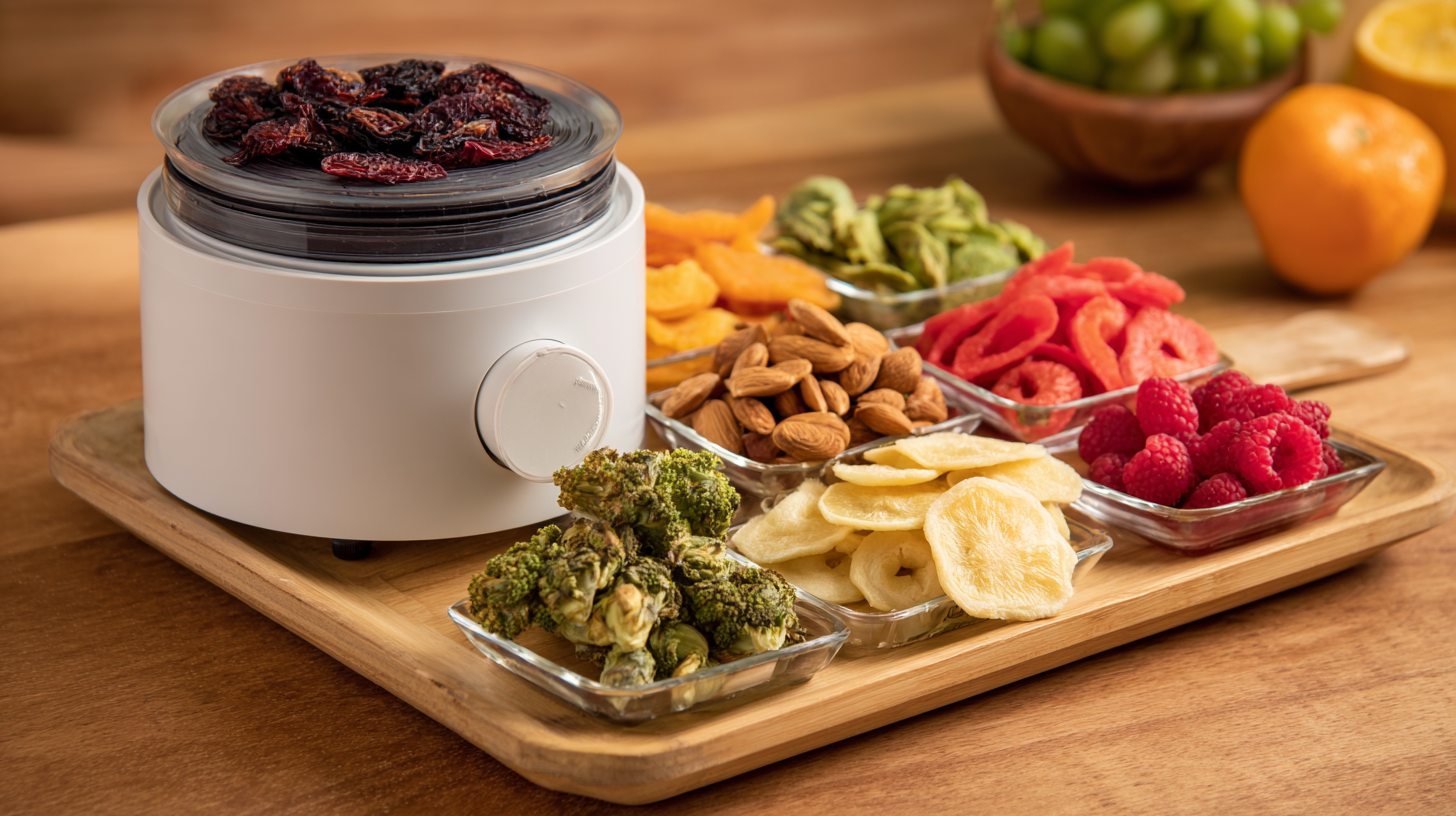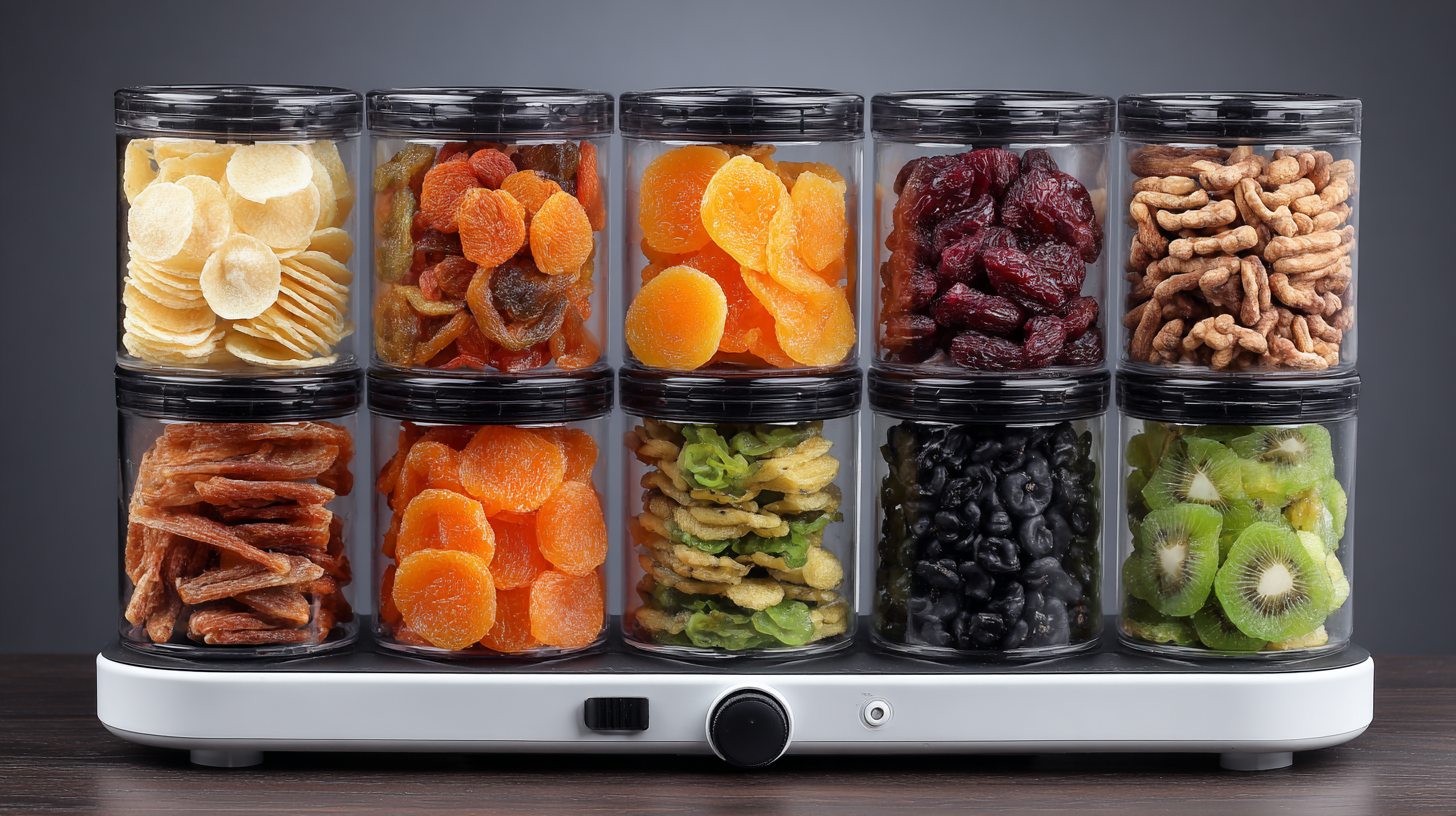Leave Your Message
In today's fast-paced world, healthy snacking can often feel like a challenge, but with the right tools and techniques, it becomes an enjoyable and easy part of your routine. One of the most effective ways to elevate your snacking game is by utilizing a Food Dehydrator Machine. This powerful appliance allows you to preserve the natural flavors and nutrients of fruits, vegetables, and even proteins, transforming them into delicious, portable snacks. Whether you're looking to create crispy apple chips, savory veggie crisps, or zesty beef jerky, a food dehydrator opens up a world of possibilities for healthy eating. In this article, we will explore essential tips and tricks for maximizing the potential of your food dehydrator, ensuring that you snack smartly without sacrificing taste or nutrition. Join us as we unlock the secrets of healthy snacking with this versatile kitchen tool!

 Dehydrated snacks are a fantastic way to enhance healthy eating, offering a convenient and nutritious alternative to processed snacks. Dehydration preserves the natural goodness of fruits and vegetables, concentrating their nutrients and flavors while extending shelf life.
For instance, dried fruits are rich in essential minerals and provide a quick energy boost, making them an ideal snack for those on the go. However, it’s crucial to be mindful of added sugars and preservatives in commercial dried products.
Dehydrated snacks are a fantastic way to enhance healthy eating, offering a convenient and nutritious alternative to processed snacks. Dehydration preserves the natural goodness of fruits and vegetables, concentrating their nutrients and flavors while extending shelf life.
For instance, dried fruits are rich in essential minerals and provide a quick energy boost, making them an ideal snack for those on the go. However, it’s crucial to be mindful of added sugars and preservatives in commercial dried products.
Incorporating a food dehydrator into your kitchen can help you create customized snacks that cater to your dietary preferences. Experimenting with varieties like coconut slices, which are packed with healthy fats and fiber, allows you to enjoy the benefits of wholesome ingredients without the guilt. Additionally, dehydrating hydrating foods such as cucumbers or watermelon can provide a crunchy and satisfying option that helps maintain hydration levels, especially during warmer months. Discovering the joys of dehydrated snacks not only promotes a healthier lifestyle but also encourages creativity and sustainability in your snacking choices.
When it comes to healthy snacking, choosing the right ingredients for dehydrating is crucial. According to a report by the American Dietetic Association, fruits and vegetables are essential components of a balanced diet, contributing vital nutrients and fiber. When dehydrating food, opt for organic produce whenever possible, as it is proven to have higher nutrient levels and lower pesticide residues. For instance, dehydrating fruits like apples, bananas, and berries not only preserves their vitamins but also concentrates their natural sugars, making them a delightful snack.
Moreover, consider incorporating proteins and whole grains into your dehydrated snacks. The USDA suggests that snacks should be a mix of macronutrients to maintain energy levels and satiety. Dehydrating legumes or creating your own granola by drying oats, nuts, and seeds can enhance the nutritional profile of your snacks. Research indicates that snacks rich in protein can help curb hunger and reduce overeating later in the day. By selecting high-quality, nutrient-dense ingredients for your dehydrator, you can craft delicious and healthful snacks that will keep you energized throughout your day.

Using a food dehydrator can be a game-changer for anyone looking to make healthy snacks at home. To get started, first, prepare your food by washing and slicing fruits or vegetables uniformly. This ensures even drying, which is vital for achieving the best texture and flavor. Some popular choices for dehydration include apples, bananas, carrots, and zucchini. If you're using fruits, consider dipping them in lemon juice to preserve color and enhance flavor.
Once your food is ready, set up the dehydrator according to the manufacturer's instructions. Arrange the pieces on the trays, avoiding overlap to allow for optimal airflow. Adjust the temperature based on the type of food; generally, fruits require a lower temperature than meats. Monitor the process, as drying times can vary. It’s beneficial to start checking for texture after a few hours to prevent over-drying. With this step-by-step approach, you can enjoy nutritious, homemade snacks that are free from preservatives and added sugars.
Exploring creative flavor combinations is key to making delicious dehydrated snacks. One of the most popular pairings is apple and cinnamon. Slicing fresh apples and sprinkling them with cinnamon before dehydrating enhances their natural sweetness while infusing a warm, comforting flavor. This combination creates a perfect snack for both kids and adults, offering a healthy alternative to sugary treats.
Another exciting flavor duo is zesty lemon and coconut. Dehydrated lemon slices not only add a refreshing citrus kick but also complement the rich, nutty taste of shredded coconut. This combination can be enjoyed as a stand-alone snack or used as a topping for yogurt or granola bowls. For those who enjoy a savory twist, consider dehydrating cherry tomatoes with a hint of basil and garlic. This mixture results in bursting flavors that can elevate salads and pasta dishes, making it an ideal pantry staple for quick and healthy meal additions.
| Snack Type | Main Ingredient | Flavor Combinations | Dehydration Time (Hours) | Nutritional Benefits |
|---|---|---|---|---|
| Apple Chips | Apples | Cinnamon, Nutmeg | 6-8 | High in fiber, vitamin C |
| Banana Chips | Bananas | Coconut Oil, Honey | 6-10 | Rich in potassium, low in calories |
| Vegetable Chips | Kale, Sweet Potatoes | Olive Oil, Sea Salt | 4-8 | Full of vitamins A and C, antioxidants |
| Dried Fruit Medley | Mixed Fruits | Cinnamon, Orange Zest | 8-12 | Good source of antioxidants, vitamins |
| Herb Seasoned Nuts | Almonds, Walnuts | Rosemary, Garlic Powder | 4-6 | Healthy fats, protein |
When it comes to enjoying the benefits of dehydrated snacks, proper storage plays a crucial role in maintaining their freshness and crunchiness. One effective solution is to use airtight containers. Glass jars, vacuum-sealed bags, or plastic containers with tight-fitting lids can significantly reduce exposure to moisture and air, which are the primary enemies of dehydrated foods. By storing your snacks in these containers in a cool, dark place, you can extend their shelf life and keep them tasting great for weeks or even months.
Another smart tip for preserving your dehydrated snacks is to label and date your storage containers. This simple practice not only helps you keep track of your snacks' freshness but also allows you to rotate your supply based on the oldest items. Additionally, using silica gel packets or oxygen absorbers in your storage can further enhance the longevity of your treats by absorbing excess moisture and preventing oxidation. By implementing these storage solutions, you can ensure that your homemade dehydrated snacks remain delicious and crunchy, ready to enjoy at any time.






